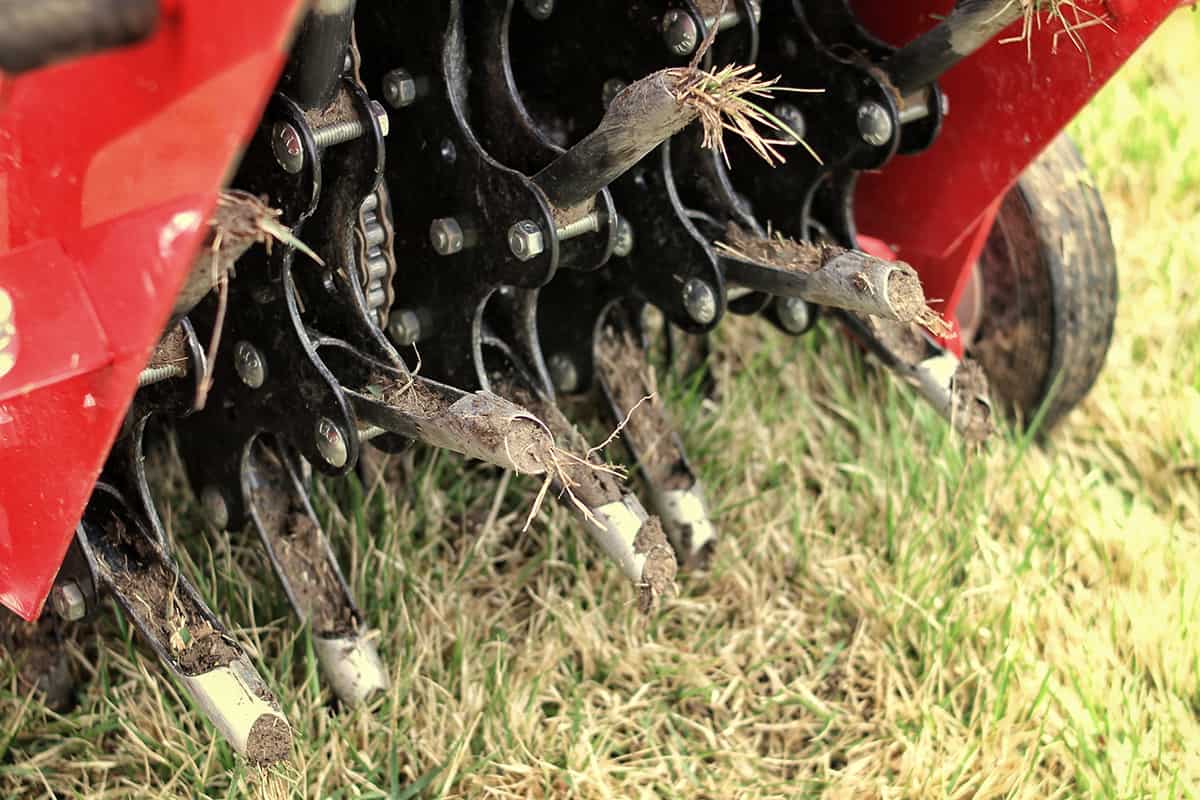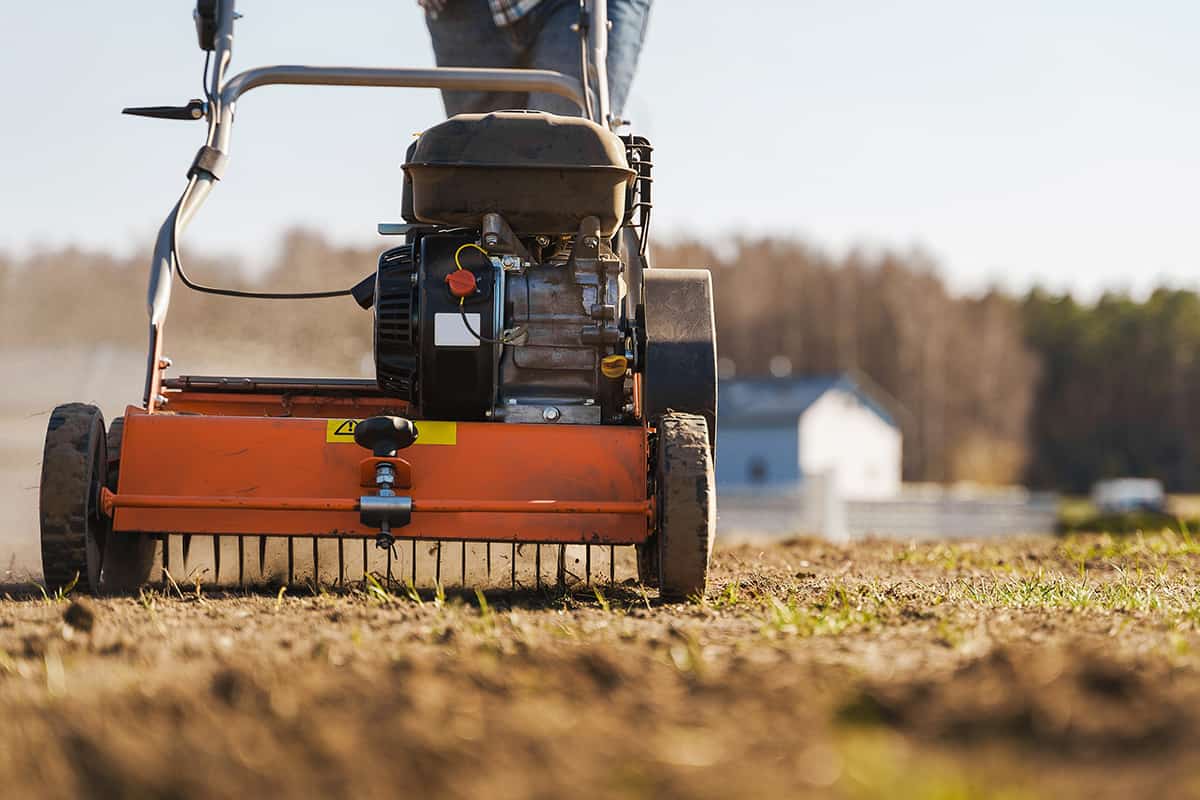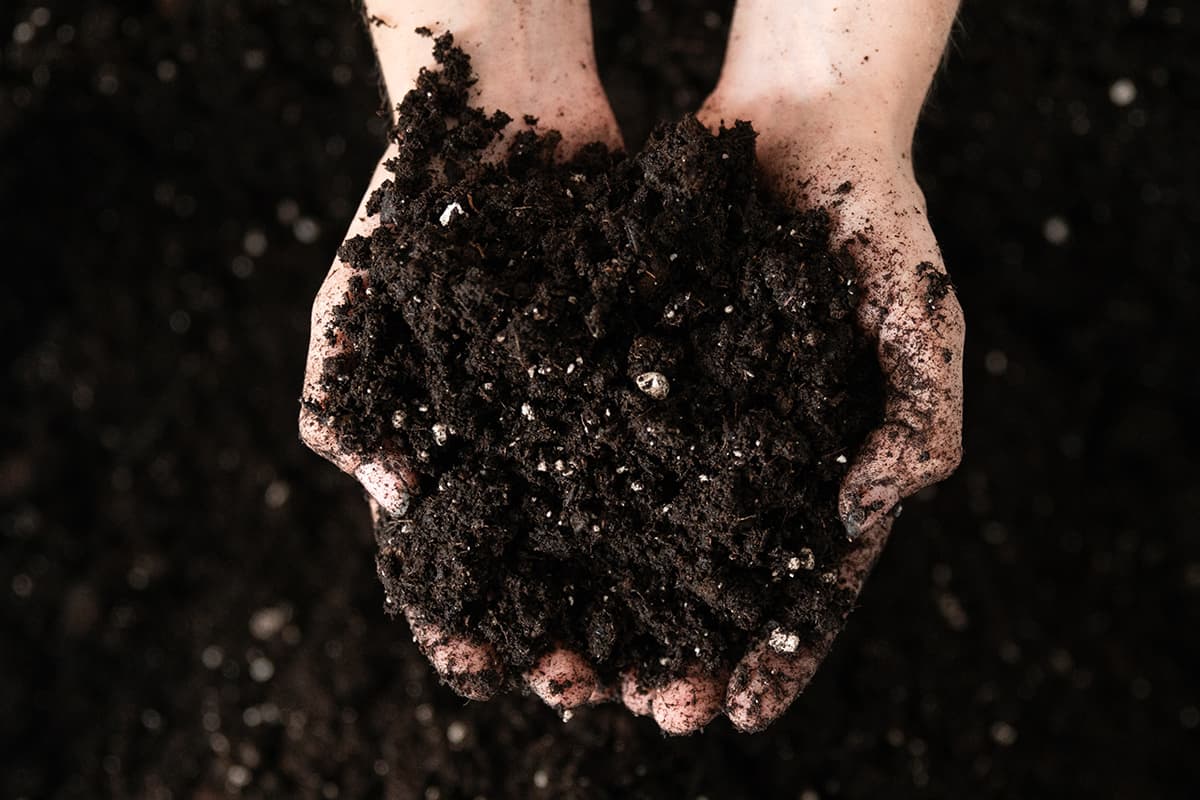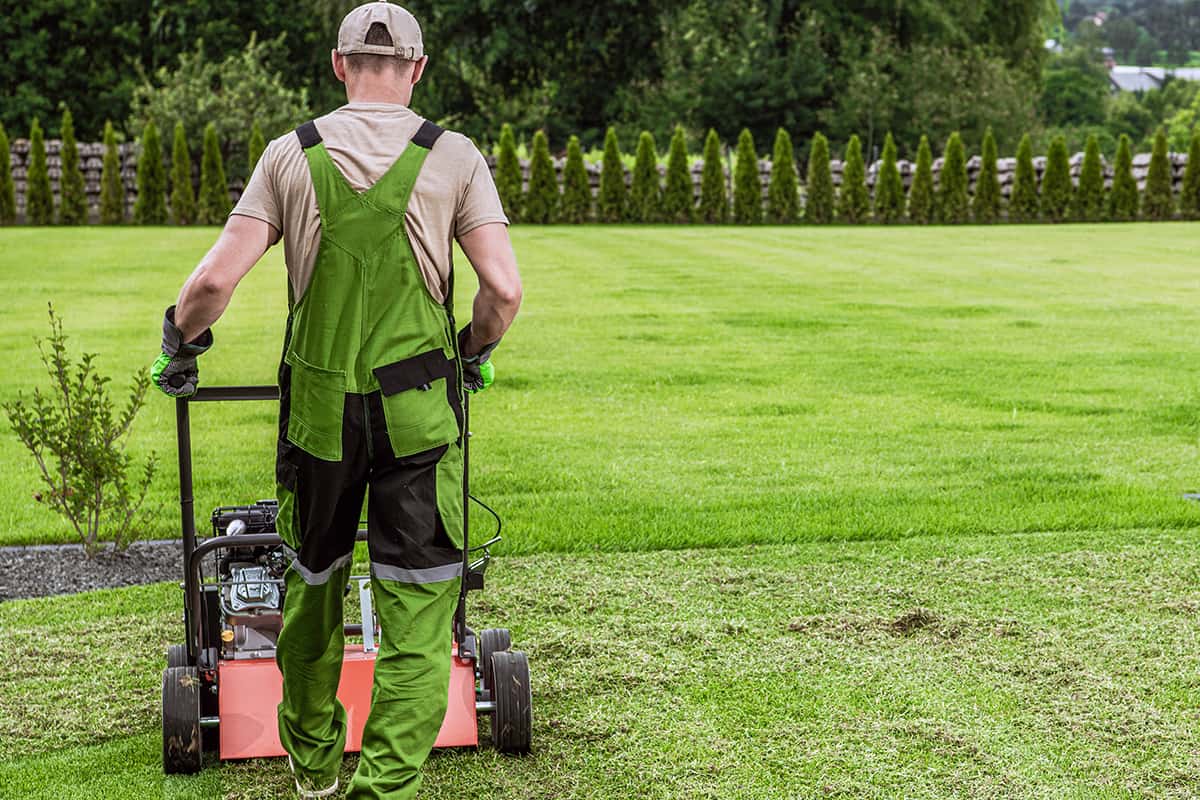Figuring out a good time to take care of your much-needed garden maintenance can sometimes be confusing. For example, do you need to aerate around your lawn but the weather calls for rain? If you aerate the soil during rainfall, what will happen? Is this a good idea?
Well, we've done plenty of research into these questions and have the answers below.
Although you can usually aerate in light rain, doing this won't always benefit your lawn. Many pros claim that aerating during rain can cause the ground to become flooded or anaerobic in the worst case. However, that tends to apply to heavy rainfall immediately after aerating.
So, if possible, wait to aerate until the rain is very light or the sky is clear for the next few days for the best results.
As we start this article, we will cover all things aerating a garden and discuss when you should do this. Whether you're behind on breaking up the soil around your property, live in constant rain, or need extra tips and tricks, we're here to help. With that said, let's dive right into this article below!
Can You Aerate In The Rain?
Although it is possible to aerate the ground while it rains, you don't always want to do this. Since the process of aerating soil opens it up and creates holes for drainage, immediately filling the ground with moisture can cause flooding.

Even if you aerate while the rain is light, if conditions worsen, your newly aerated soil could run into issues moving that influx of water. Most experts don't recommend aerating unless the skies are clear, so that is the best time to do this task.
Specifically, according to Wright Mowers, the ground can become incredibly muddy when you aerate in the rain or shortly before a storm. Although that can happen whenever it rains, aerated soil tends to be unstable before it can settle.
Therefore, deciding to aerate before or during a rainstorm can cause a mess on your lawn. Again, doing this won't necessarily destroy your garden or grass, but it can make a mess and cause flooding.
It could be better to wait until the rain stops and the soil has a few days to dry before aerating.
What Happens If I Aerate During A Rain Storm?
A few things may happen if you choose to aerate during a rainstorm. First, you can almost always expect flooding from a freshly aerated lawn.
Since the primary goal of aeration is to improve soil drainage, doing this too soon before, after, or during rainfall can give your garden the opposite effect.
As we said above, aerating a lawn during a rainstorm can cause muddiness, floods, and even create anaerobic conditions. That is when your soil essentially loses oxygen, often creating major issues for plants nearby.
According to HORTAU, when the soil becomes anaerobic, the oxygen in the pores of the soil profile is replaced by water. Microbial, fungal, and plant activities quickly use up any remaining oxygen if moisture persists.
Therefore, you want to try and stay off your lawn with aerating shoes or equipment if a storm is imminent. You want to give the soil time to settle after aerating it, which usually means a few days-week of dry weather.
Of course, once the soil settles, that's when you shouldn't have any issues with flooding or anaerobic conditions when heavy rainfall comes.
Can You Aerate Before It Rains?

Yes! As long as your property has a day or two to settle before rainfall, aerating beforehand should be okay. As we mentioned, heavy rain during or immediately after aerating can create waterlogging in the soil.
So, even if you aerate hours before a big storm, that dump of moisture can create problems. Luckily, if you do light aerating and the rainstorm isn't significant, the soil may respond quite well to the added water.
According to some gardeners, rainfall after aeration can benefit the process and give your grass a healthy boost in moisture and soil conditions.
Again, you won't be saying this with flooding or anaerobic conditions, but not all rainfall is bad.
On the other hand, if the forecast predicts days of rain shortly after you plant to aerate: skip it and wait until the storm passes. Too much water can negatively impact your soil's recovery process.
Since aerating a garden typically happens in places with poor soil quality, why add to the issue?
When in doubt, wait it out!
How Long Should I Wait To Aerate After A Rain Storm?

Typically, you need to wait 24-48 hours to aerate after a heavy rainstorm. Remember, the ground can be somewhat moist to aerate but can't be soaked or flooded.
Most experts suggest waiting for a day or two after rainfall to break up the ground, although you may prefer to hold off for closer to three or more.
According to Caramanico Landscaping, heavy rainfall can stress the grass and soil, especially during a drought. Therefore, it's best to wait until the ground can adjust to the wetter conditions before aerating.
Even though it may feel like you're helping by putting new holes in the soil, doing this prematurely can wreak havoc on your property's oxygen and nutrient levels.
In contrast, if the rainstorm isn't too harsh and the ground doesn't show signs of waterlogging: then it's a good time to pull out your equipment and get aerating.
The moist ground can make aerating easier, so in some cases, the recent rain can work in your favor.
Is It Okay To Aerate Damp Soil?

In most situations, you should be fine to aerate slightly wet soil. Since this added moisture can make the aeration process easier, you don't always need to wait until things completely dry.
Specifically, if you test the ground beforehand and find that when you try and roll the soil into a ball, it falls apart in your hand: that means it's ready to aerate.
However, when you do this, the ground forms a ball and sticks together, indicating too much moisture and compaction in the soil.
Especially for people with actively growing lawns, aerating too soon after rain can kill your grass. Generally, aerating the lawn shouldn't be done unless the conditions are ideal.
Like any major change in conditions, your plants can respond poorly to heavy rain and immediate aeration. It's better to take things slow and wait until the ground is damp but not saturated.
Pro Tip: we also recommend trying a soil moisture meter before aerating if you want an accurate reading.
XLUX Soil Moisture Meter
This soil moisture meter gives you an easy-to-read accurate result, works inside and outdoors, won't damage roots, features a seven-inch probe, doesn't require batteries, and comes in two sizes.


Follow this link to view it on Amazon.
What Season Is Best To Aerate My Lawn?

Although this can depend on where you live, the best time to aerate a lawn is usually between the late summer and fall months. Specifically, many experts recommend aerating the soil in September or October.
That's because your grass is likely winding down, preparing itself for cooler weather and possible dormancy. Getting the soil prepped for next spring is always beneficial, especially since the winters are dry.
Compared to the spring or early summer, it won't usually rain as often or hard in winter. Of course, it might snow or freeze regularly in colder USDA zones, but that won't negatively impact your aerated soil.
Scotts provides a helpful recommendation for people with warm-season or cool-season grass as well:
- Warm season grass: late spring-early summer
- Cool season grass: early spring/late winter or fall
Again, this can impact your timeline depending on your grass type. Luckily, aerating in mild weather throughout the year should be okay, but results can vary based on weather, grass, and other ground conditions.
Regardless, remember to avoid aerating in heavy rainfall or immediately before/after a storm. Too much water in the newly opened pores of your ground can create a lack of oxygen.
When Should You Not Aerate A Lawn?
You usually don't want to aerate the ground while your lawn is actively growing/in its peak season. Since that typically falls in the spring, we wouldn't recommend mid-spring aeration.
However, you can get away with breaking up the ground in early spring, just before things rev up. That's because the grass isn't in full swing yet, and can give the soil time to settle before needing to supply endless nutrients to the new blades.
You know how difficult growing and maintaining grass can be for anyone with grass. Therefore, you don't want to disturb the peace during a lawn's spring growing season, but instead, before or after.
Mid-spring also tends to have the most rainfall. As we covered, this can become problematic for your soil and create oxygen-deprived conditions for your grass.
That said, try and hold off until your lawn starts to wind down, or try and get everything aerated before the mid-spring timeline.
To Finish It All Up
Whether you think it's time to aerate or you have a tight schedule you can't miss, you may wonder if it's okay to do this in the rain. From what we found, you can aerate in the light rain, although you should wait until a clear day in most cases.
If you aerate during heavy rain, you risk flooding and creating anaerobic conditions in your lawn's soil. That can prevent oxygen from reaching your grass and end up killing it.
Furthermore, it's usually better to aerate during periods of slow grass growth, like early spring or summer/fall.
While we have your attention, check out these helpful related garden posts below!
Can You Aerate Your Lawn In The Spring? Should You?
What's The Best Time To Aerate And Overseed A Lawn?
My Solar Lights Are Not Working After Rain – Why? What To Do?

